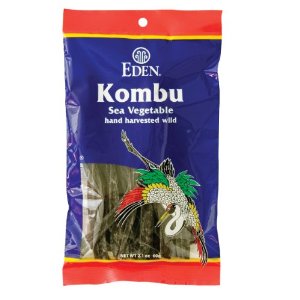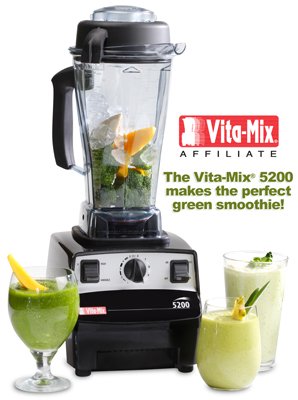How To Cook Beans
Learning how to cook beans is an important skill for every vegan cook-- legumes are an essential ingredient in many of the most delicious, nutritious, economical and satisfying meals. Believe me, badly cooked (crunchy, chalky, or mushy) beans can ruin an otherwise delightful eating experience.
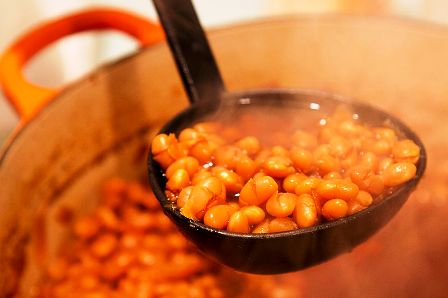
FOUR COOKING METHODS
- Long-Soak and Long Simmer Method
- Quick Soak, "Shock" and Simmer Method
- Slow Cooker Method
- Pressure Cooking Method
There are many variations in processing beans from scratch. You will find a huge range of tips, anecdotes and opinions on the Internet. The beans that I will cook here will be vegan (no animal products used, such as ham, lard, etc.), and low fat (only a tablespoon of olive oil is demonstrated in the very good pressure cooking video but otherwise, there is no real need to use any oils in the cooking. You can decide whether to add salt at the beginning, in the middle or at the end, or at all. Soaking and salting seem to be the most controversial part of cooking beans. Practice and try different ways with the salt and the soaking and see what one works best for you and your palate.
**There is no need to pre-soak lentils or dried peas**
1. How to Cook Beans with the Long Soak, and Long Simmer Method
In this pretty popular American way of how to cook beans, there is a belief that soaking the legumes a long time (6-8 hours) will rehydrate the bean somewhat and thus reduce boiling time, perhaps remove some of the bitter inhibitor (the nasty-tasting phytic acid on the surface of the bean that keeps it from being eaten by its predators in the dry, raw state so that it can go on to reproduce more beans), and, most important, cut down on the gas that beans produce during the digestive process. It is interesting to note that in Mexico where beans are a staple, they are generallly cooked without any soaking, while the rice, another staple, is almost always soaked in advance of cooking.
- Soak in about triple the amount of water (example, 3 C. dried beans=9 C. water) for 6 to 24 hours
- Drain beans and rinse off under cold water
- In a large pot (I use a big corn-cooking/soup-making pot), add the soaked beans, 9C. fresh, filtered water and about 2 inches of Kombu (dried Japanese sea vegetable)
- Bring to boil. Reduce to low, put lid on and simmer for about 2 hours or more (check to see if beans are done to your satisfaction at 2 hours.)
- Midway (about an hour into the simmering) add salt, if you wish. This seems to be the time to add it for a more flavorful bean, but you might want to add it in the beginning, at the end, or not at all. I add about a tablespoon of Celtic Sea Salt. The Kombu and the unprocessed sea salt add in extra minerals and flavor.
- Use in your favorite recipe right away or refrigerate for up to 3 days in a container with a tight-fitting lid or freeze for up to 4 months.
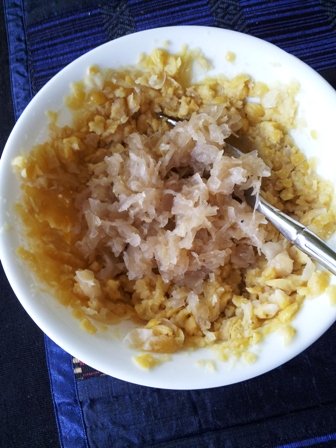
How to cook up this yummy quickie Recipe for Chicks and Kraut: Mash up just-cooked Chickpeas (Garbanzos) with a couple of scoops of your own Sauerkraut (or a natural store-bought brand of Sauerkraut.) Who knew that being healthy naturally could be so delicious? **Chickpeas can be cooked soft and creamy for recipes like hummus or used as a flour (ground from the dry chickpeas) for falafals. They are diverse in their use (See our recipe for Carob and Chickpea Cookies).
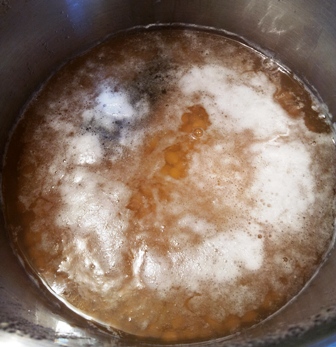
2. How to Cook Beans with the Quick Soak, "Shock" and Simmer Method
Another popular method of how to cook up legumes is to use the quick soak and "shock" treatment--
- after a short (1 hour) soak of 3 C. of dry beans,
- they are drained, rinsed, and placed in a large pot with with 9 C. of fresh water and about 2" of Kombu (see above Method)
- Bring them to a hearty boil for 3-5 minutes, and
- then remove from heat with lid on for 1 hour. This is called "shocking" in the bean world (but not at all shocking in the human bean world, lol).
- After the one hour is passed, bring the beans to a boil, and then reduce heat and simmer for another hour.
- Use immediately in a recipe, or refrigerate for up to 3 days (in a container with a tight-fitting lid) or freeze for up to 4 months.
**The foam on the beans is nothing to worry about-- just carbohydrates (starch). You can try using baking soda and doing extra rinses, but that is up to you as to how much time you want to spend doing needless little tasks.
3. How to Cook Beans the Slow Cooker Way
In the morning wash and pick over your 3 C. of dry beans. Put them into a slow cooker / crockpot and cover well with water. Add a 2" piece of Kombu. Turn to low, cover with a lid, and allow to bubble away for eight to ten hours. They should be ready to eat about the time you arrive home from work. You can eat them then, or you can put them in the fridge overnight and the next morning add back into the slow cooker to make Boston Baked Beans:
- 6 C. cooked beans
- 1 medium onion, chopped
- 1/3 C. Molasses
- 1/3 C. Brown Sugar (or coconut palm sugar-- very nice!)
- 1/2 C. Tomato-Roast Garlic Pasta Sauce
- 1 T. Apple Cider Vinegar (with the "Mother" in it)
Cook on LOW setting for about 8 hours, or on high for 4 hours. This makes a most fragrant and welcoming aroma to a tired, homecoming family.
4. How to Cook Beans with the Pressure Cooker Method
While a pressure cooker is a much faster technique for making beans, there is the inconvenience of having to do a sort of 'picky' washing of the pot/lid/steam vents later to make sure that there isn't a starchy clog that will damage the cooker in a future use. But if you have a pressure cooker, and do a lot of cooking with it already, you won't be as concerned as a newbie, so go ahead and take a look at this excellent simply-explained video. I have a brand new electric pressure cooker called an Instant Pot that I am breaking in slowly. When I finally do cook beans in it I will share instructions for it at that time.
I have a brand new electric pressure cooker called an Instant Pot that I am breaking in slowly. When I finally do learn how to cook beans in it I will share instructions for it at that time. The instructions show that cooking time can vary from 10-15 minutes for soaked Adzuki, Black Beans and Black-eyed peas, to around 30 minutes for unsoaked Soy Beans.
How To Cook Beans<--click to return to the top of the page
Smoky White Bean Spread -Gluten-Free; Vegan; Oil-Free
